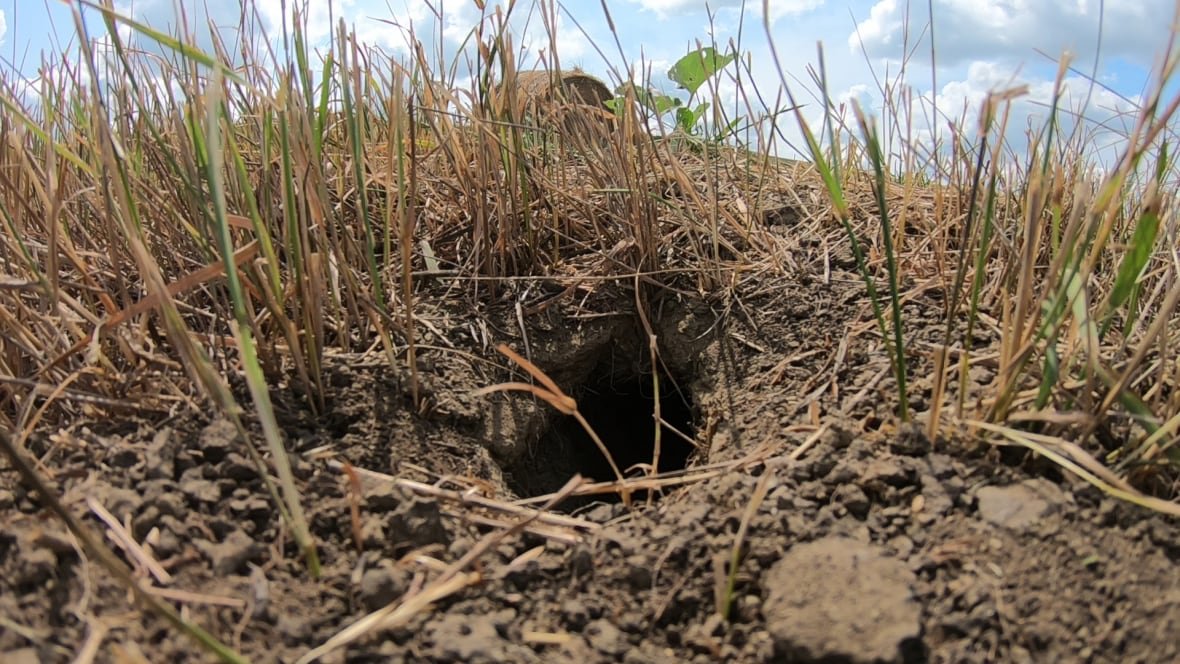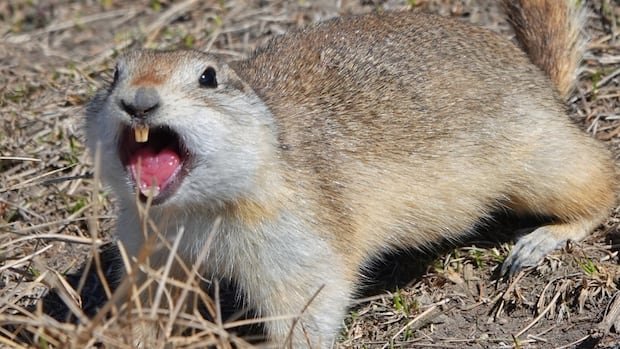The residents of Saskatchewan have a mixed relationship with gophers.
Gainer, the adorable mascot of the Saskatchewan Roughriders, is a treasured gopher originating from Parkbeg, a small town about 60 kilometers west of Moose Jaw.
However, individuals who encounter gophers and their extensive hole-digging activities often find themselves in conflict with these furry creatures.

Chuck Toney, a farmer near Gull Lake in southwest Saskatchewan, witnesses firsthand the extent of damage caused by gophers to farmland.
He mentioned that following consecutive years of drought, gophers have flourished, particularly in his meadow brome pastures.
“Meadow brome is not very resilient to drought and simply withered away. The gophers seized the opportunity as there was no vegetation to conceal them,” stated Toney, highlighting the gophers’ preference for overgrazed pastures and open ground for predator observation.
“Their population surged dramatically. I refer to it as the ‘gopher-pocalypse.’
Historical impact of gophers
Gopher issues are not new. In 1917, Saskatchewan designated May 1 as a holiday. Over 900 schools were closed for the day, allowing children to venture into the countryside to capture, shoot, or trap gophers causing havoc on agricultural lands.
The child who caught the most gophers was rewarded with a Shetland Pony. For years, the provincial government incentivized gopher eradication by offering bounties on gopher tails.
Today, Toney is among numerous farmers in Saskatchewan who view their land as a battleground. Where there are numerous gophers, there are also abundant badgers ready to prey on the smaller rodents. Badgers create sizable holes that can damage farming equipment and harm livestock like horses and cows, necessitating costly repairs.
Toney acknowledged investing significant funds in poison, firearms, and ammunition to rid his land of as many gophers as possible. While these efforts have mitigated the ‘gopher-pocalypse’ on his farm, he must remain vigilant to address the issue continuously.

Collaboration between affected farmers and hunters
The Saskatchewan Association of Rural Municipalities (SARM) and the Saskatchewan Wildlife Federation are exploring strategies to reduce the gopher population.
Darrell Crabbe, the executive director of the Saskatchewan Wildlife Federation, suggested connecting hunting enthusiasts interested in addressing the gopher issue with affected landowners.
“[We’ve been] facilitating contacts between the hunting community and landowners facing this problem. This straightforward approach allows us to bridge the gap between the two interests,” Crabbe explained.
Utilization of poison
The methods for managing the gopher population have evolved. Poison, such as strychnine, was extensively used in Saskatchewan and Alberta until Health Canada banned it in 2023 due to unintended poisoning of non-targeted species.
T

